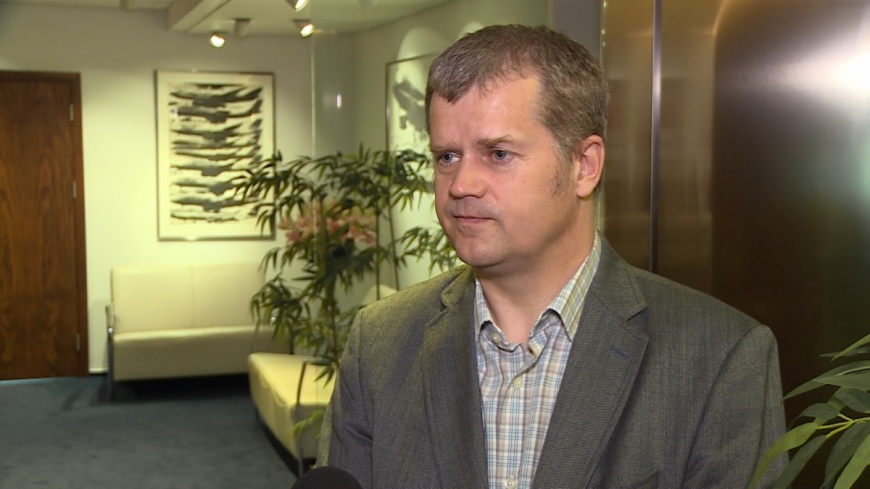| Says: | Mariusz Szpikowski |
| Function: | prezes zarządu PPL, dyrektor Lotniska Chopina w Warszawie |
The Warsaw Chopin Airport is getting ready for growing numbers of passengers. This year, it might see a record number of passengers pass through.
The Chopin Airport is on the rise. About five million people passed through the airport by the end of April alone, with one in four passengers being transfer passengers. The year 2018 might bring a record number of more than 16 million passengers. To handle this growing traffic, the facility has to undergo a number of alterations. Once these alterations and extensions are completed, Chopin Airport might be able to handle a total of more than 50 aircraft operations an hour, a considerable increase from the current capacity of 42. Alterations will also include the terminals and the underground infrastructure.
The first months of 2018 proved to be record months for Warsaw Chopin Airport. From the beginning of January to the end of April, almost five million passengers passed through the airport, a 15 percent increase in one year. Warsaw’s airport has also been gaining popularity as a convenient hub airport in Central and Eastern Europe.
“We're particularly happy to see that our strategy to position the Chopin Airport as a hub airport is working. One in four passengers passing through our airport are transfer passengers. A growing number of people from neighbouring countries has been using our airport. This is a major success for us in that it supports our mission of achieving a critical mass of transfer traffic which could be later taken over by the New Central Polish Airport,” Mariusz Szpikowski, President of the Board at PPL and Director of Warsaw Chopin Airport, said in an interview with the Newseria Biznes news agency.
A total of 15.75 m passengers passed through the Chopin Airport in 2017 (up by 22.7 percent y/y). This put the airport on the “Fast and Furious” list featuring 19 fastest-growing airports since 2012 (according to the ACI). Among the EU airports from the second category, i.e. with 10-25 m passengers a year, the Warsaw Chopin Airport was unmatched in terms of the increase in the number of passengers. It was second among all European airports.
But the passenger traffic will continue to grow rapidly. Even the most pessimistic scenarios expect that at least 24 m passengers a year will pass through the airport ten years from now. So, alterations will be necessary despite the plans to close the Chopin Airport by 2027, with the large New Central Polish Airport taking over.
“Due to the decisions made in the past, we have very limited extension possibilities. We will undertake the extension of the Chopin Airport, but this will be done within the confines of its designated function of a hub airport. There are certain environmental limitations we have to deal with,” Mariusz Szpikowski explained.
The airport has a limited number of operations per hour, which is currently at a maximum of forty-two arrivals and departures and the number of daily operations is nearly six hundred. This is paired with restrictions to flight operations during the night hours (no take-offs and landings between 11:30 pm and 5:30 am) and overlapping runways. Planes fly above the city after take-off and the extension is made difficult by the roads located around the airport.
“We are limited by infrastructure and our urban surroundings which is why we are unable to extend the airport. We are limited by the waves of take-offs and departures as the need for passenger traffic is not evenly distributed during the day. Finding space for more passengers during peak hours would be a major issue. For this reason, on the one hand, we do everything to increase the passenger capacity of the airport, but we have our limits, which cannot be overcome,” the Director of the Warsaw Chopin Airport explained.
According to the announced plans, the extension project will take two years to complete, although the exact beginning date is still unknown.
Warsaw Chopin Airport served a record 5 million passengers during the first four months. Let’s not forget that this is the second part of the low winter season and we’re on the brink of the high summer season. Last year we served 15.75 million passengers, passenger traffic is increasing and, something we can be more satisfied about, our strategy to position Warsaw Chopin Airport as an airline hub is bearing fruit, as one in four passengers served by our airport was a transit passenger. This means that more and more passengers from neighbouring countries are served by our airport and make a stop during their journeys here. This is a very important success for us, as we are following our mission, which is to build the critical mass of transit traffic, which will then be moved to the New Central Polish Airport.
When it comes to financial results, time and time again we’ve observed record performance in the course of the last two years when compared to the previous years. The highest result achieved by Warsaw Chopin Airport to date was PLN 136 million in 2015. Both in 2016 and 2017 we reached net results much higher than PLN 200 million. As at the end of 2017 it was PLN 270 million and in 2016 more than PLN 200 million.
N: What will be your next investments to increase capacity. What do you plan on doing and what funds will be allocated to achieve it?
Those will mainly be investment projects connected with the capacity of runways, to improve it from 42 to 50 operations per hour. They will involve rapid-exit taxiways with associated infrastructure, such as aprons. We will have to create additional positions for code E aircraft, such as Dreamliner and plan the airport layout so as to provide good positioning and an appropriate number of aprons to the most common code C aircraft. We mustn't forget about other segments of traffic which go through our airport. The second important factor is the rearrangement and redevelopment of the terminals. We need to extend the non-Schengen area, as well as increase the capacity of security check-points, passport control booths. We cooperate with the Border Guard in this respect and we are considering automatic border control solutions.
Here, the crucial element is to reach an agreement with the Army to move the helicopter operations to another location, a heliport. This would be closer to the tower of the Polish Air Navigation Services Agency on the other side of the airport and would prevent helicopter operations from blocking the runways while enabling us to use the northern part of the airport near the military airfield for parking aprons for code E Dreamliners.
Trade

Polish consumers are more satisfied than Americans, with the customer satisfaction level being close to 80 percent
For six years the customer satisfaction index in Poland has grown by over 17 percentage points to nearly 78 percent, and it currently exceeds the customer satisfaction levels recorded in the USA and the United Kingdom. Service quality and its growing significance among businesses have had a tremendous impact on customer satisfaction. For the eleventh time the Customer Service Quality Star titles have been awarded to entrepreneurs recording the best results in this field.

